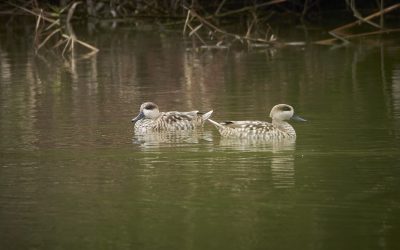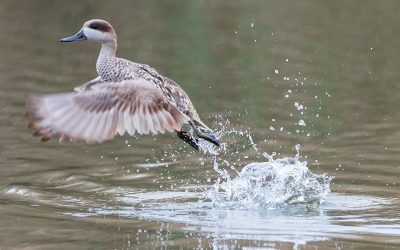A total of 43 participants from administrations, public bodies, law enforcement agencies and the Andalusian Hunting Federation have attended in Seville the conference ‘Coordinated actions to combat poaching of waterfowl in the Guadalquivir marshes, for the protection of the Marbled Teal’, held within the framework of the LIFE Cerceta Pardilla.
The conference was organised by the Department of Sustainability and Environment of the Regional Government of Andalusia, partner of LIFE, with the collaboration of the Biodiversity Foundation of Ministry for Ecological Transition and Demographic Challenge (MITECO), where the event took place. The aim was to agree on strategies to combat poaching in one of the most important wetlands in Europe, the Guadalquivir marshes.
During the morning session, the problem of illegal hunting of waterfowl was addressed, with special attention to the critically endangered marbled teal, as well as the operational organisation of the different bodies involved, in order to carry out a diagnosis of the situation.
In the afternoon, working sessions were held, divided into six thematic groups, which focused on the role of the hunting community and its collaboration with the authorities, the management of hunting in Andalusia and the organisation of surveillance operations against poaching.

Inmaculada Gallardo, Territorial Delegate of Seville of the Andalusian Regional Government, and Ignacio Torres, Deputy Director of the Biodiversity Foundation.
BOOSTING COLLABORATION WITH THE HUNTING COMMUNITY AND IMPROVING PREVENTION
One of the points of consensus reached was the importance of encouraging fluid communication between hunting societies and the regional government, by means of meetings prior to the hunting season, which would even allow for the promotion of voluntary agreements. The possibility of promoting additional measures aimed at groups that actively collaborate against poaching, for example by hiring game wardens or acquiring monitoring or surveillance systems, was also discussed.
From the point of view of surveillance and the actions of the three bodies with police powers (Guardia Civil, National Police and Environmental Agents of the Junta de Andalucía), it was agreed to maintain proper communication between all of them in order to establish working protocols that improve prevention and the effectiveness of their work. In this sense, the dissuasive effect that the work of the agents at strategic points could have was valued, as well as the possible creation of a joint command for local interventions.
ANDALUSIAN STRATEGY AND TECHNICAL COMMITTEE FOR POLICE COLLABORATION
Among the most important proposals, the need to reinforce the administrative framework by drawing up an Andalusian Strategy against poaching, or by revising the existing strategy against the illegal use of poisoned baits, incorporating specific measures against firearms, was highlighted.
On the other hand, the creation of a technical committee for police collaboration in the fight against poaching in the Lower Guadalquivir has also been proposed, which would be of an operational and coordinating nature between the different police forces. Its functions would be both proactive, to plan ahead, and reactive, in cases requiring the adoption of urgent measures. The bureau would bring together representatives of the competent administrations, and would hold regular meetings to exchange information, coordinate operations and provide additional resources for such operations.
THE LIFE CERCETA PARDILLA
The LIFE Cerceta Pardilla project develops a set of research, conservation, governance and awareness-raising actions to strengthen the status of marbled teal populations in the natural environment, improve the status of wetlands and scientific knowledge of the species.
In this project, coordinated by the Biodiversity Foundation of the Ministry for Ecological Transition and Demographic Challenge, the participating partners are the ministry itself via the Segura River Basin Authority and Tragsatec, the Andalusian Government (via the Regional Ministry for Sustainability and Environment and the Environment and Water Agency), the Valencia Regional Government (via the Regional Ministry for Environment, Infrastructure and Territory), the Murcia Regional Government (via the Regional Ministry for the Environment, Mar Menor, Universities and Research), as well as the non-governmental organisations SEO/BirdLife and ANSE. The project is supported by the LIFE Program of the European Union and the Directorate-General for Water.




